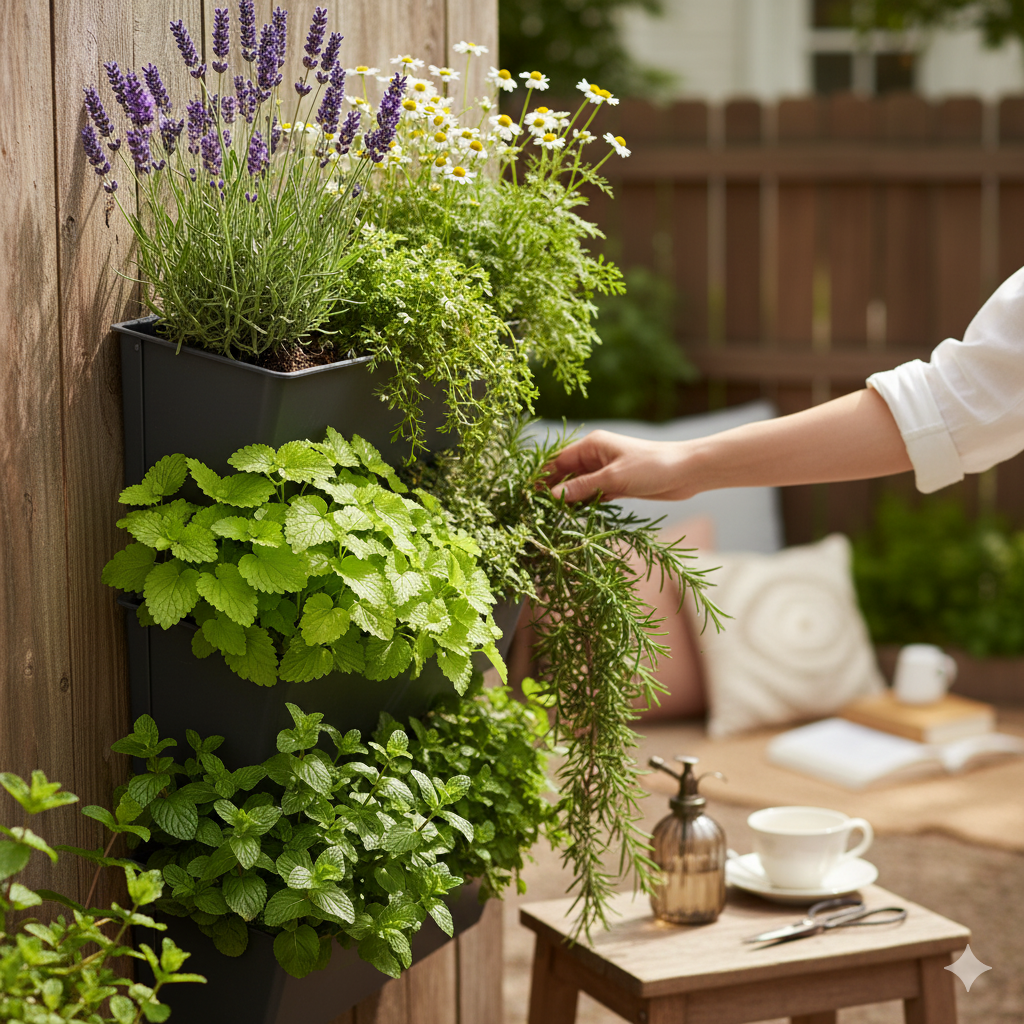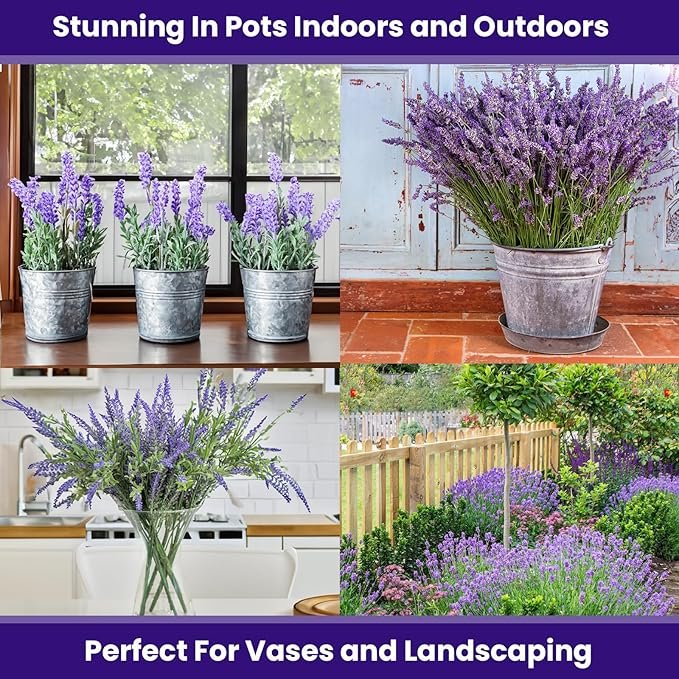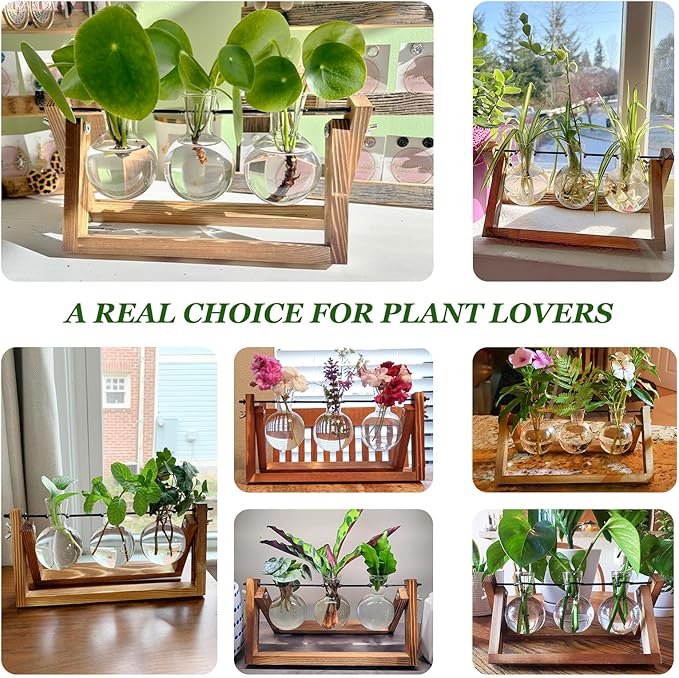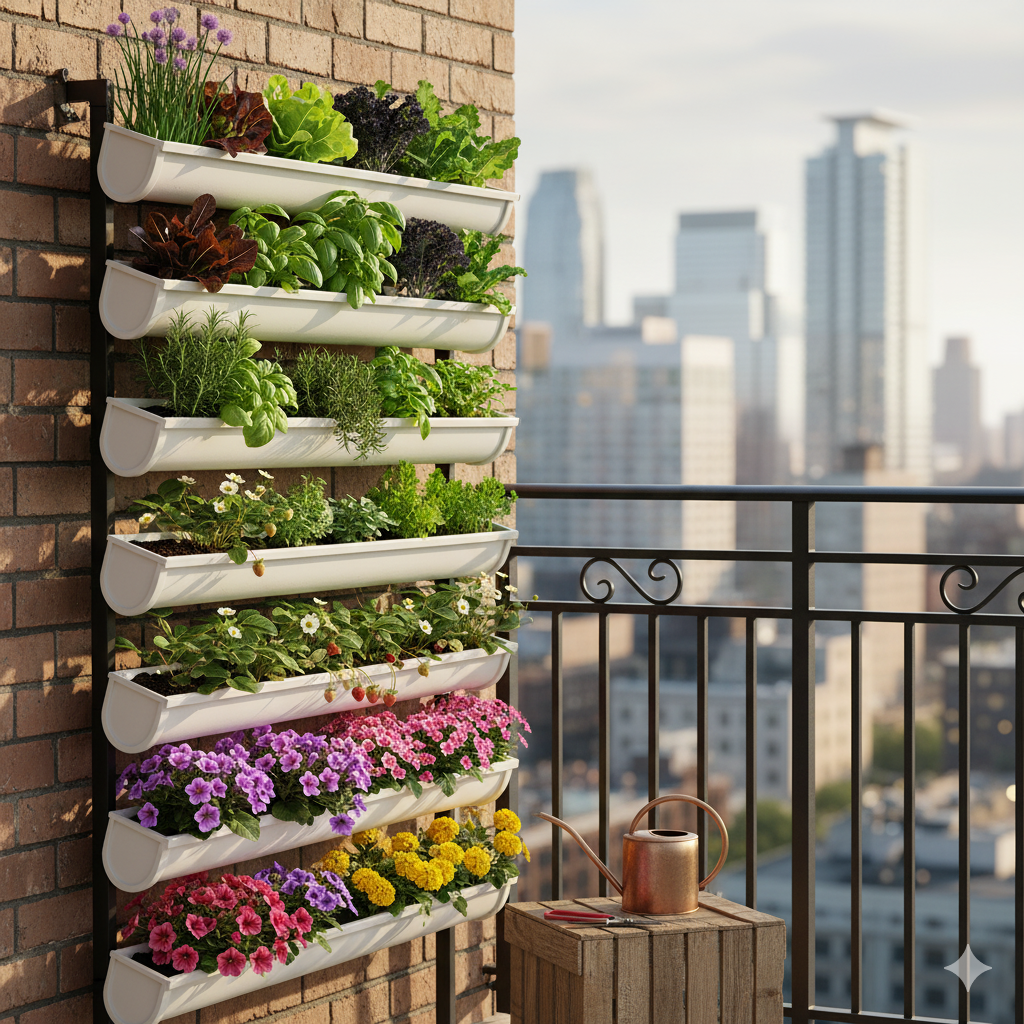In the constant hum of the modern world, our minds are often the busiest place of all. We juggle notifications, deadlines, and a never-ending stream of information, leaving us feeling frazzled, disconnected, and overwhelmed. We search for an escape, a way to quiet the noise. But what if the most potent antidote wasn’t a new app or a weekend retreat, but a simple, living sanctuary you could cultivate right outside your door?
This is your invitation to step away from the screen and into the deeply restorative world of sensory gardening. We’re going to explore how to create a living wall of tranquility using fragrant herbs for your vertical garden. This isn’t just about growing ingredients for your kitchen; it’s about intentionally cultivating specific aromas that have been used for centuries to soothe anxiety, sharpen focus, and calm a restless spirit.
By bringing these scents to nose-level in a space-saving vertical garden, you create an immersive, therapeutic experience you can interact with daily. It’s a gentle command to your busy mind: stop, breathe, and be present. Ready to build your aromatic oasis? Let’s begin.

Table of Contents
The Power of Scent: Why a Fragrant Vertical Garden Works
Before we get our hands dirty, it’s important to understand why this practice is so effective. It’s not just pleasant—it’s science. Our sense of smell is uniquely powerful because it is directly linked to the limbic system, the most ancient part of our brain, which governs emotion, memory, and instinct.
When you inhale the scent of an herb like lavender or rosemary, the aromatic molecules travel directly to this emotional control center. This is why a certain smell can instantly transport you back to a childhood memory or evoke a powerful feeling of peace. An aroma doesn’t get filtered by our analytical brain; it goes straight to the heart of our feelings.
A vertical garden is the perfect vehicle for this experience:
- It Saves Space: Ideal for balconies, patios, and even sunny indoor walls, it proves you don’t need a yard to have a meaningful garden.
- It Creates a “Scent Wall”: By stacking plants, you create a concentrated cloud of fragrance that envelops you.
- It Encourages Interaction: With plants at eye and hand level, you’re more likely to touch the leaves, releasing their essential oils and deepening the sensory experience.
Setting Up Your Sanctuary: A Quick-Start Guide
Creating the structure for your fragrant herbs is simple. The focus is on providing the right foundation for your plants to thrive.
Choosing Your Vertical Planter:
There are many excellent options available, each suited for different spaces and styles:
- Felt Pocket Planters: These are fabric sheets with pockets sewn in. They are lightweight, easy to hang on a wall or railing, and excellent for herbs.
- Tiered Planters: These are cascading or stacking pots that create multiple levels of growing space in a single footprint.
- Wall-Mounted Pots: Individual pots or railing planters can be arranged vertically on a wall or trellis.
- DIY Gutter Gardens: A wonderfully budget-friendly option using repurposed rain gutters mounted on a wall.
Essential Supplies:
- Your Chosen Vertical Planter
- Lightweight Potting Mix: This is crucial. Never use heavy garden soil, which compacts easily and drains poorly in containers. Look for a mix containing peat, coir, and perlite.
- A Watering Can with a Long Spout: This makes it easy to water each individual plant or pocket without spillage.
- Sunlight: This is your most important ingredient! Nearly all the herbs on our list need at least 6 hours of direct sunlight per day to produce the lush, aromatic growth you’re after.
The 5 Best Fragrant Herbs for Your Vertical Garden
Now for the heart of our sanctuary. We have specifically chosen these five herbs for their renowned calming properties, their captivating aromas, and their ability to thrive in a vertical garden setting.
1. Lavender (Lavandula angustifolia): The Icon of Calm
If there is one scent synonymous with relaxation, it is lavender. Its presence in your garden is like a gentle, fragrant sigh of relief.
- The Scent Profile: Clean, soft, and floral, with a slightly sweet, herbaceous undertone. It’s the scent of clean laundry dried in the sun, of peaceful summer evenings, of a mind at ease.
- The Calming Benefit: Lavender is perhaps the most studied herb for its calming effects. The primary component, linalool, has been shown to reduce anxiety, lower heart rate, and promote deeper, more restful sleep. It doesn’t just mask stress; it actively works on the nervous system to induce a state of serenity.
- Growing in a Vertical Garden: Lavender demands two things: full, unrelenting sun and excellent drainage. It despises “wet feet,” making it a perfect candidate for a vertical system where water drains freely. Choose a compact English lavender variety like ‘Munstead’ or ‘Hidcote’, which will stay manageable and won’t outgrow its pocket or pot. Water only when the soil is dry to the touch.
- Your Unplugged Ritual: Just before dusk, step out to your garden. Gently brush your fingers along the lavender foliage and silver-grey stems. You don’t even need to pick a flower. The simple act of touching the plant will release its essential oils onto your skin. Inhale deeply from your fingertips. Let this be the ritual that separates your busy day from your restful evening.

2. Mint (Mentha spicata/piperita): The Refreshing Re-setter
While lavender soothes, mint awakens and clarifies. It’s a mental reset button, cutting through mental fog and fatigue with its bright, invigorating aroma.
- The Scent Profile: A blast of cool, clean, and sweet freshness. Spearmint (M. spicata) is softer and sweeter, while Peppermint (M. piperita) is more intense and pungent due to its higher menthol content. Both are incredibly refreshing.
- The Calming Benefit: The aroma of mint is a “focusing calm.” It’s been shown to enhance memory and increase alertness while simultaneously reducing feelings of frustration and fatigue. It’s the perfect herb to have nearby when you’re working from home or need to clear your head after a long day.
- Growing in a Vertical Garden: Mint is famously easy to grow—perhaps too easy. It is an aggressive spreader, which makes it a terrible neighbor in a traditional garden bed but an ideal candidate for a vertical garden, where its roots are contained to a single pocket or pot. Give it plenty of sun and keep the soil consistently moist. It’s one of the few herbs that will forgive you for slightly overwatering.
- Your Unplugged Ritual: In the mid-afternoon, when your energy slumps, pluck a single mint leaf. Rub it gently between your thumb and forefinger to warm and release its oils. Close your eyes, bring your fingers to your nose, and take three slow, deep breaths. It’s a more effective and healthier pick-me-up than a third cup of coffee.

3. Rosemary (Rosmarinus officinalis): The Scent of Remembrance
This woody, evergreen herb is a powerhouse of fragrance and function. Its pine-like aroma is grounding and centering, a scent of clarity and purpose.
- The Scent Profile: Complex, resinous, and deeply herbaceous, with notes of pine, camphor, and lemon. It is a strong, invigorating scent that feels both ancient and clean.
- The Calming Benefit: The old saying, “Rosemary for remembrance,” is backed by science. Studies have shown that inhaling the aroma of rosemary can improve cognitive performance, memory, and mood. It provides a calm that is rooted in focus, helping to banish scattered thoughts and center your attention.
- Growing in a Vertical Garden: Like lavender, rosemary needs full sun and sharp drainage. It is drought-tolerant once established and hates to be overwatered. For vertical gardens, choose a prostrate or “trailing” variety of rosemary, which will gracefully spill over the edges of your planter, creating a beautiful cascading effect.
- Your Unplugged Ritual: Before you sit down to read, work, or meditate, snip a tiny sprig of rosemary. Place it on your desk or next to you. Its ambient fragrance will act as a gentle anchor for your attention, helping you to stay present and focused on the task at hand.
4. Lemon Balm (Melissa officinalis): The Spirit Lifter
A member of the mint family, Lemon Balm is one of the most cheerful plants you can grow. Its fragrance is pure, unadulterated happiness.
- The Scent Profile: A bright, crisp, and authentic lemon scent, but without the sharp acidity of a real lemon. It’s a sweet, green, citrusy aroma that smells like sunshine.
- The Calming Benefit: For centuries, Lemon Balm has been used as a “gladdening herb.” Its scent is a known mood-booster and stress-reducer, helping to alleviate mild anxiety and promote a sense of well-being. It’s the perfect antidote for a gloomy day or a heavy heart.
- Growing in a Vertical Garden: Lemon Balm is another vigorous grower that, like its cousin mint, benefits from the confinement of a container. It thrives in full sun to partial shade and prefers consistently moist soil. It’s incredibly forgiving and a great choice for beginner gardeners.
- Your Unplugged Ritual: Pluck a few leaves and add them to a glass of cool water for an instant, refreshing infusion. Or, simply crush a leaf in your palm on your way out the door in the morning. Let its bright, optimistic scent be the first intentional breath you take to set a positive tone for your day.
5. German Chamomile (Matricaria recutita): The Scent of Slumber
Everyone knows chamomile tea, but the living plant offers a far more delicate and nuanced aromatic experience. Its tiny, daisy-like flowers are as cheerful as its scent is soothing.
- The Scent Profile: Gentle, sweet, and surprisingly fruity, with a distinct note of crisp apples. The fragrance is subtle and comforting, like a soft, warm blanket.
- The Calming Benefit: Chamomile is the ultimate lullaby herb. Its scent contains compounds that have mild sedative effects, binding to the same brain receptors as anti-anxiety drugs. Inhaling its aroma is deeply relaxing, helping to ease tension and prepare the body and mind for sleep.
- Growing in a Vertical Garden: Chamomile is an annual with fine, feathery leaves. It loves full sun and well-drained soil. It can get a bit leggy, so it does well when planted in the upper pockets of a vertical garden where it can be allowed to sprawl and trail gracefully. The flowers are the primary source of the scent and can be harvested for tea.
- Your Unplugged Ritual: Make harvesting chamomile flowers part of your bedtime routine. In the quiet of the evening, gently snip the small blossoms. The simple, repetitive motion is meditative. You can use them fresh or dry them for a cup of tea, but the very act of collecting these fragrant little flowers is a peaceful end to the day.

Your Sanctuary Awaits
A garden doesn’t need to be a sprawling plot of land to change your life. It can be a few pockets of soil on a sunlit wall. By choosing to grow these fragrant herbs for your vertical garden, you are doing more than just planting; you are cultivating a daily practice of mindfulness. You are creating a multi-sensory tool to help you anchor yourself in the present moment, one deep, aromatic breath at a time.
This is your personal oasis, your green escape from the digital noise. It’s a living, breathing reminder that peace can be found in the simplest of things.
So, which herb will you plant first? We invite you to begin your journey and share your fragrant vertical garden with our community. Tag your photos on social media with #UnpluggedRoutine so we can see your sanctuary take shape, and please share your experiences in the comments below!